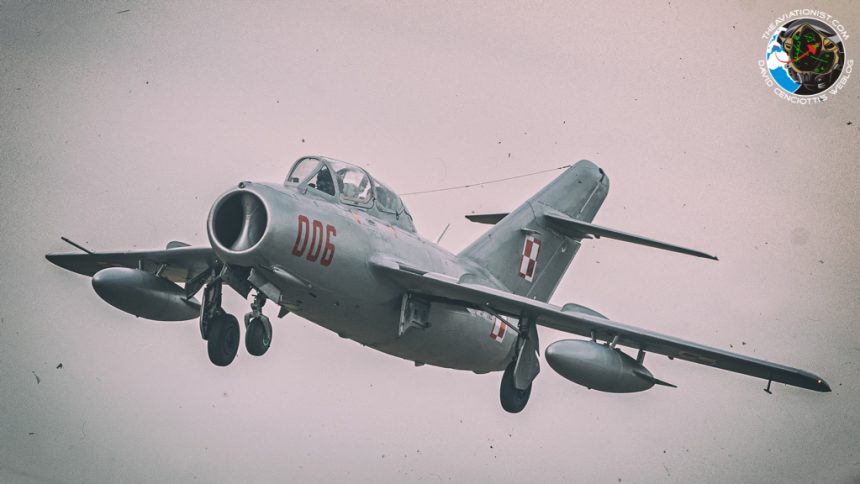We spoke with the organizers of the only air show in Poland this year.
The “Antidote Air Show” held during the last weekend of August, has been the only international aviation event this year in Poland. The above really set the expectations high. Nonetheless, the event was remarkable – thanks to the diversity of the participants and the speed of arrangement of the whole show. The organizers also provided the participants, and the audience, unmatched levels of hospitality.
The readers of The Aviationist are well aware (since the famous event organized back in 2016), that Leszno is one of a few events in Europe with night displays. The arrangement of the showground is well thought over. The crowd line is unobstructed, allowing the audience to enjoy the pyro at night. The display area also has a corner. This gives the pilots a unique opportunity to turn around it and showcase the topside of the airplane.
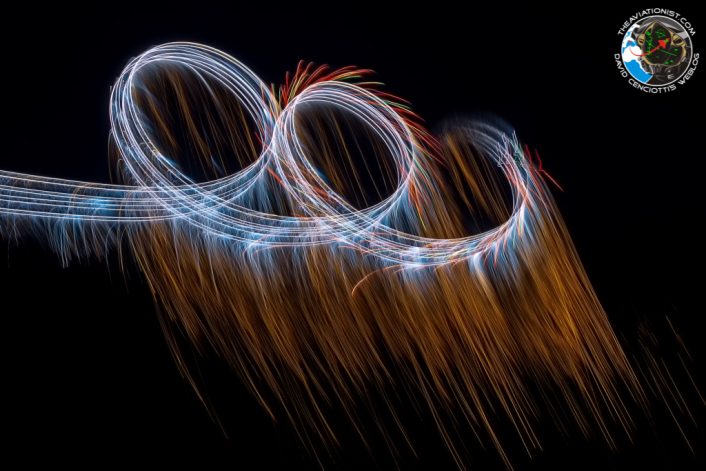
The display aircraft were primarily small ones – but all performed stunning, yet intimate, displays providing the audience with unforgettable experiences.
The highlights included, among the other airframes, the C-45H Expeditor Southern Comfort, Falcon 2000 ultralight, the Lim-2 jet, or a glider display by Jan Makuła (Swift S-1). Other acts were the solo display by Marek Choim (daytime and a night one), as well as aerobatic groups, including the Zelazny Aerobatic Group with a three-ship Zlin-50 formation with numerous opposing passes at low altitude. Solo display flown by Szymon Grabowski, in his stealthy-looking XA-42, was also quite impressive.
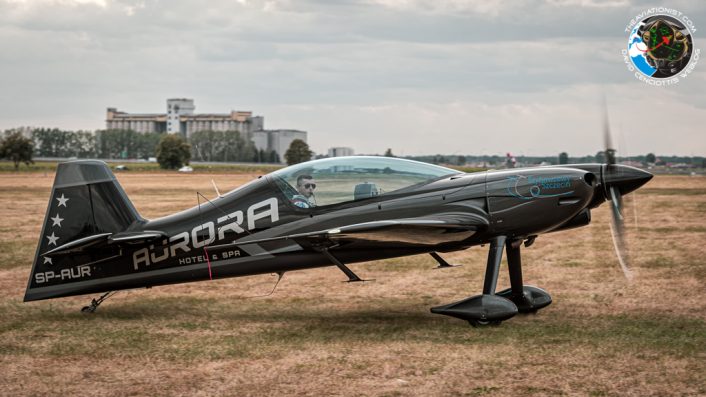
The event also saw the participation of foreign aircraft.
The Red Bull T-28B Trojan was the main highlight, with its very characteristic smoke trials, with the vortices left in the sky for quite some time. Red Bull also brought its glider Team Blanix for a nighttime display with pyro. The third ‘Red Bull’ themed display was the one involving the Czech The Flying Bulls team flying the XA-42s.
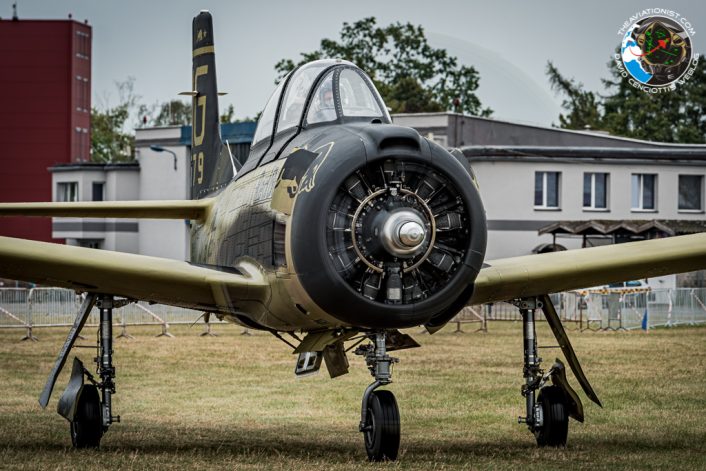
The SB Lim-2 jet (Polish license-built MiG-15, under new ownership since December 2019) was the only jet-powered aircraft involved in the show. The performance ended with some low fly-bys and a wall of fire behind – yet another hallmark of the Leszno show.
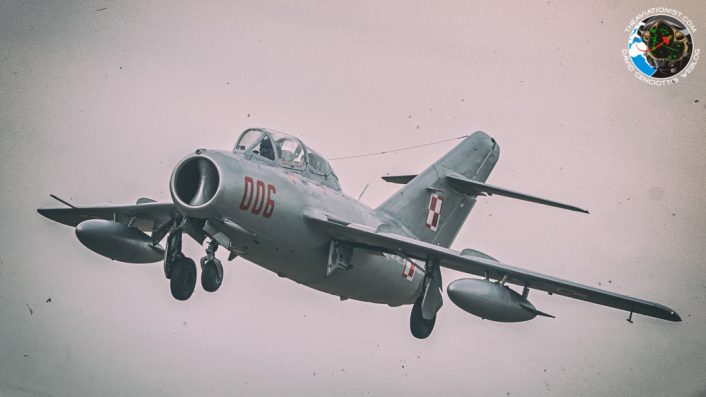
The gaps in the program were filled by an ERCO Ercoupe duo flying in circles just before the sunset, with a climbing turn. Despite the show’s simplicity, it has been quite attractive to photographers.
The night shows involved the UK FireFlies Display Team, a display by Marek Choim, and an incredible display by the Flying Dragons paramotor team from Poland, with time- and music-based fireworks and light displays. The show’s star was the AeroSparx display team, with massive amounts of pyro in their show.
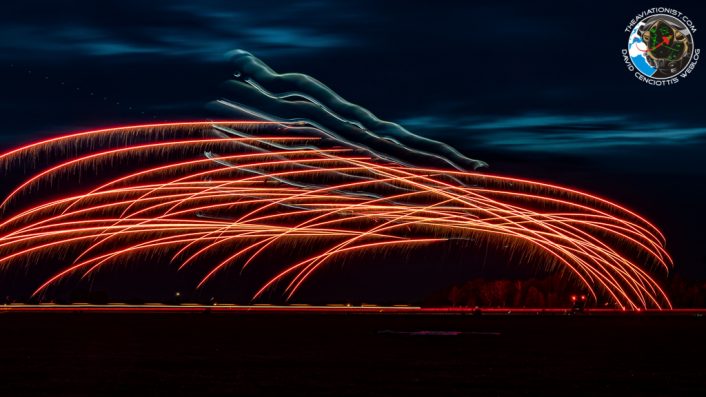
The Leszno show, as we have known for quite some time now, is truly special, regardless of its scale. It remains a true benchmark for any air show that is organized at a smaller airfield, or even at large military airbases. We cannot recommend it highly enough – despite the massive scale of the show it still has a unique level of intimacy and magic, that carries a true passion and spirit of aviation. The Leszno show is a definitive benchmark and has our seal of approval. When the date for the next year’s edition is announced, make sure you save it and put it on your schedule.
The organizers had to face some challenges in bringing it all together, due to this year’s unprecedented circumstances of the COVID-19 pandemic. We spoke with them about the obstacles that they have met along the way, asking about their ways to overcome them, and about future plans.
The interview is a The Aviationist Exclusive.
Leszno Air Show – Interview with the Organizers
How can one organize an international airshow, during a pandemic?
Jacek Siminski, The Aviationist: Congrats on organizing virtually the only international air show this year, in Poland! Was the Antidotum Air Show a success?
Michał Graczyk, Director at the Leszno Airfield: Thank you! Our original plan had been to organize the event on a much larger scale, with its profile departing from what a traditional air show is, but, as we all know, this year has redefined everybody’s plans. Nonetheless, we would not be ourselves, had we not attempted to implement our plan, even to a limited scope. I think this, alone, is a huge success.
Also, there were many challenges before us, while the event was not a certain plan until the very last moments of the process. The pandemic in Poland and Europe has been dynamic, with changes occurring daily, and the arrival of the foreign participants has been threatened by it. Ultimately, however, everything went according to the plans. We think this has been a huge success – not only did it have its roots placed in our involvement, but we also were quite lucky.
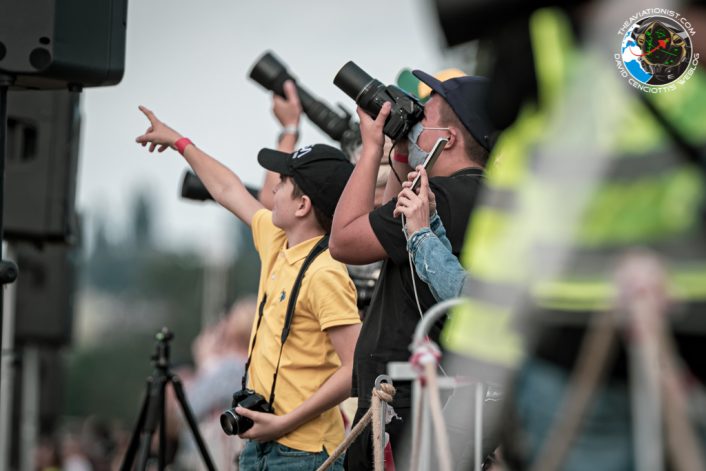
JS: How many guests, exhibitors, and people took part in the event? You did expect the attendance to be a bit better, right?
MG: The event involved around 8 thousand attendants. However, we were facing many limitations, due to the pandemic. The fact that we have organized everything in exactly 6 weeks is also quite important here (usually the whole effort takes a year). The promotional budget was almost non-existent too. I think that we ultimately have created a quite intimate event. However, the true aviation geeks knew how to find us, attending the show at the airfield in Leszno. We do hope that we have, at least partially, provided them with a dose eliminating the aviation energy deficit.
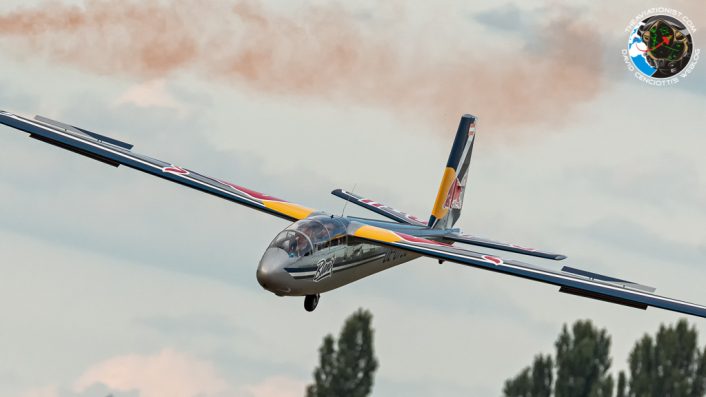
JS: Since the first ‘Glider Picnic’ organized in 2006, the event has grown quite dramatically. Unfortunately, as we can remember, the last full-scale edition took place in 2016. What obstacles made it impossible for you to spread the wings, throughout the last 4 years?
MG: There were many, none of them could really stop us completely. The most important and the most time-consuming issue was related to the change of the entity having jurisdiction over the airfield. Back in 2018 the City of Leszno has come to an arrangement with the Aeroklub Polski (AP; Polish Aero Club) and brought a municipal company to life, that took over the responsibility for administrating/managing the airfield. A lot of people working on the organization of the air show also work at the airfield daily. This gave us much more room to play, but also we became autonomous.
Our hearts and souls are invested here. We could not have imagined doing this event anywhere else. So we were patiently waiting for our moment to come… However, we would not say that we have been unable to spread our wings. This time has been quite important and useful for us. We have been able to test the new format of the show on a miniaturized scale, namely to fuse the air show with live music. The audience really appreciated that. And we now know how these two things can be brought together effectively. Let’s hope nothing comes in the way next year.
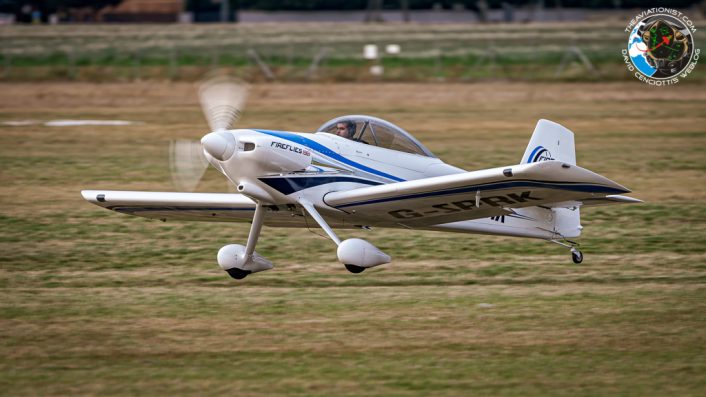
JS: Where did you even get the idea to organize night displays in Leszno as well? The Leszno show has been, for a long time, the only event in this part of Europe, with night displays…
MG: The first night show in Leszno took place in 2013. Only the British and the Belgians had attempted this before us, so we can boldly claim that most probably we have been the third show like that in Europe. This style of event has been attractive for us, as we have always wanted to fuse the air show with some concerts that have always been an inseparable element of the Leszno event. The first air show had two or three highlights. Not many teams were out there to choose from, doing night displays. Nonetheless, even though back then we were nowhere near the scale at which we are today, the show was already impressive.
JS: Let me refer to the display program for a second. It’s more like a theater play, a spectacle, it does not resemble an average air show at all. This is a matter that significantly differentiates the Leszno show from other events. Does it require the efforts to be doubled?
MG: We do attend other air shows in Europe, observing the audience and how people react and behave. It is difficult to gain the spectators’ attention over longer periods. This is why it is a priority for us to make the show varied and highly dynamic. It is almost our obsession to keep everything aligned with the schedule. We are meticulously creating the show plan, weeks, or even months before the show.
The idea to add live music to the show has also been inspired by our willingness to emphasize the coherence and magic of the event. We want the air displays to be as rich as possible, and here we stretch the budget to its limits, but we also want the show to be attractive for those who have not become passionate about aviation, yet. If we refer to the opinions that reach us, we have been successful in reaching that goal so far.

JS: The Leszno field does not have to handle so much traffic, daily, as it does during the event. Was it a major challenge for the ATC and the ground crews?
MG: Indeed, the traffic at the airfield is much greater – but we are very happy about that, treating this circumstance as a holiday. The airfield is full of life. Nonetheless, it has the capacity to host twice as many guests. We have two parallel runways at hand. With proper planning and ATC management, this makes it possible to conduct several operations at once. We can do simultaneous landings, take-offs, and so on. We are all waiting for those holidays. But we also hope that traffic would be as high as possible on a daily basis as well.
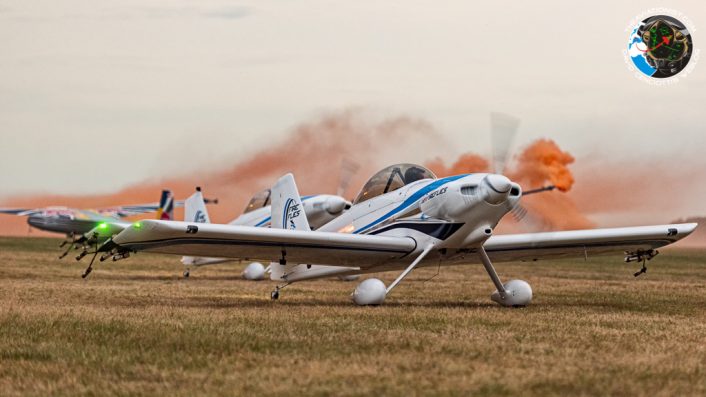
JS: The plans for the Leszno air picnic this year, which rapidly evolved into an air show, were quite ambitious. The pandemic came in the way. What was the most important obstacle, in redefining the plans?
MG: No significant problems occurred… The plans were ambitious, indeed. We have narrowed them down. We have some previous experience already, in handling the unexpected limitations. Organizing the show over six weeks has not been a major challenge. We have been working together, and, more importantly, we have been friends for many years now. We are sharing a common vision and forming a tight team – this really makes collaborative efforts like that easier. When it comes to the pandemic itself, we were staying in touch with the Sanepid [State Sanitary Inspectorate (PIS) / sanitary-epidemiological station], the local authorities, and the uniformed services. When it comes to the safety of the audience, we were not that worried. Now, looking back at the event, we can already confirm that there was no coronavirus cases growth increase recorded after it. So we were right. The arrival of the foreign participants was questionable though.
JS: So, was it a challenge to bring in foreign show participants? What were the formalities here?
MG: Due to the growing number of COVID-19 cases a week before the show, the arrival of at least three foreign teams was threatened. More and more countries were blacklisting Poland, imposing a quarantine obligation – and as we all know, the display pilots often have other responsibilities back home and it would not be optimal for them to face a two-weeks limit after returning home. The pilots were willing to cooperate, some things, however, we were unable to overcome. Luckily, everything went in line with the plan, with all guests appearing in Leszno! We want to thank the Polish CAA [Civil Aviation Authority, ULC] for all of the support and efficient cooperation!
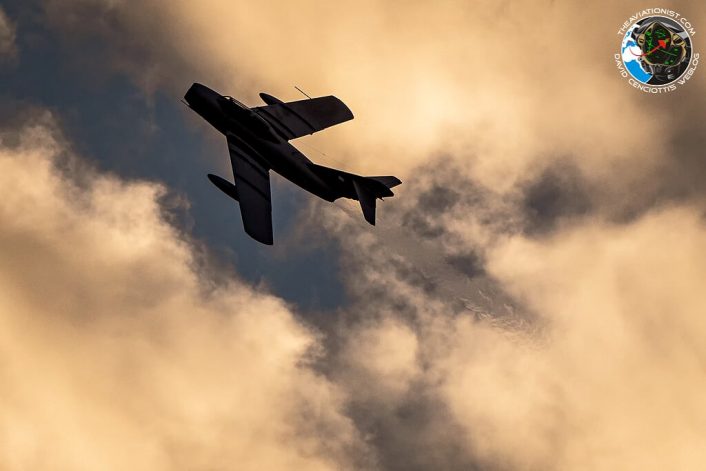
JS: Everyone was expecting the F-16 display in the sky over Leszno this year, as in 2016. The pandemic was the obstacle here, right? Instead of that, we had the Lim-2 [Polish license-built MiG-15 copy – eds.] show. Lim-2 was flying from the Poznan Ławica airport, during the event. How big of a challenge was that, logistically?
MG: There were no problems with that, since all parties involved were willing to help, working together towards a shared goal. We did not want any gaps to occur in the schedule. This is our obsession, as we have mentioned already, to meticulously follow the schedule.
The Lim needed 7 minutes to reach Leszno from Poznan. Here, we had a spontaneous formation display, by amateur display pilots, arranged. The presence of the planes in the air was entirely dependent on whether everything proceeds in line with the plan. Should we experience any delay, the pilots were ready to conduct an extra flypast. But they also knew that they could be asked to cut their display short, leaving the airfield area. The fact that this was a success, logistically, has also been made a reality due to the support we have received from the Ławica International Airport staff. Without them, there would be no chance to make it successful.
JS: Has the date been set already, when it comes to the next year’s edition? Can you shed a light on those plans?
The initial plan is to organize the event in June again. And this is what we are driven to do. The recent years have taught us to be flexible – the time will tell.
More photos here.

